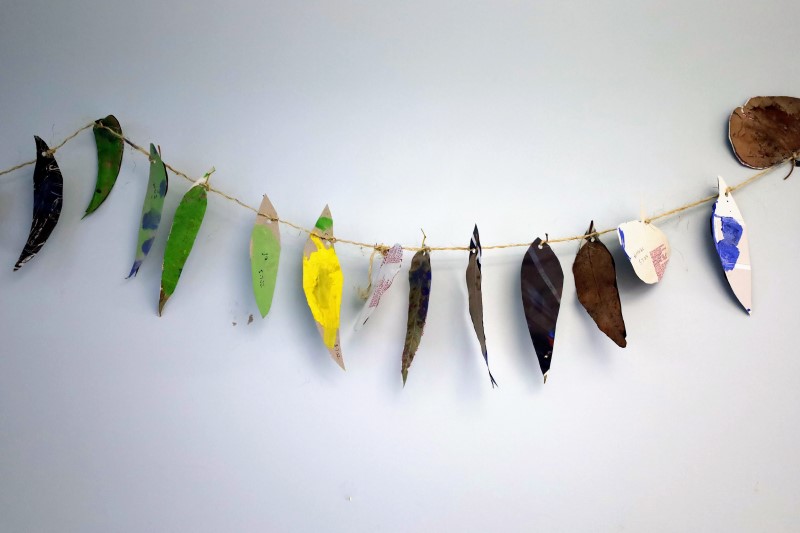On Country
A flourishing Out & About program at Gowrie Victoria allows children to connect with Country on a daily basis. This can take place in the large gardens of each service, which are open to the children each day – rain or shine. It happens in the community, wandering the banks of Birrarung, at The Harbour and Docklands Kinder, paddling in rockpools at Williamstown Beach, or exploring Cruickshank Park and Stony Creek, at Clare Court. It is also fostered through regular On Country and Bush Kinder sessions at Carlton North, Carlton Learning Precinct and Broadmeadows Valley, making shelters, listening for birds and frogs, and sharing ideas and stories about the land.
The aim is to nurture a growing understanding of Aboriginal and Torres Strait Islander perspectives, along with a love of the natural world. Carlton Learning Precinct early childhood teacher Anneke van de Vusse says children are naturally curious and love to spend time in nature. “They love finding bugs, noticing things like rain and rainbows, and pointing out things that adults might not see,” she says. “We can extend on their interest and bring a First Nations perspective that is special to the land that we learn on.”
This is achieved through introducing original names in First Nations languages for the places, creeks and animals the children connect with each day. A respect for Country and its histories is also bolstered through an understanding of the Indigenous calendar and changing seasons, and discussions on Country about First Nations truths, stories and histories.
Campfires
The campfire is a frequent occurrence at Carlton North, with children and educators drawn to the strong sense of belonging and community it creates.
Early Childhood Teacher Molly Petruccelle says the campfire not only nurtures connection to country, but connection to community, to self and to families.
“Fires are important because they respect the Wurundjeri people.” – Tom
“Coming together around the fire, in what we call our ‘meeting place’ gives us the opportunity to connect to Country and acknowledge Aboriginal and Torres Strait Islander perspectives,” Molly says. “Children understand the importance of truth-telling and engaging in conversations around the fire about Aboriginal and Torres Strait Islander histories. We enjoy singing songs in Wurundjeri Woi-Wurrung language as a way of connecting. Another way that we connect is through food and exploring bush tucker, and we will often make our own damper to cook on the campfire.”
Art and storytelling
The rich experiences of connecting with Country are further explored at Gowrie Victoria through art and storytelling. Sharing stories on Country are an important part of the Aboriginal and Torres Strait Islander perspectives program, whether it is through picture books and song, or histories and truth-telling.
The Harbour Kinder Teacher Carla Beslagic says The Docklands is a place that is rich with First Nations knowledges and stories, which are often shared with the children during regular Out & About excursions. “We wonder who lives in Birrarung and who created Birrarung, and then we take those ideas the children have in these discussions and bring them back into the classroom,” she says.
The Aboriginal and Torres Strait Islander map is also used to map out the different creation stories the children have been reading throughout the program. “The children are getting a broader understanding that there are many different knowledges that have been embedded and part of this land for tens of thousands of years,” Carla says.
At Clare Court, a strong knowledge of the local landscape is further cemented through a range of art mediums. Former Gowrie educator and artist Ashlee Hughes recently visited the early learning service to engage children in a collaborative artwork to share their deep connection to Country. “The children know the local area intimately, through frequent Out & About visits,” Ashlee says. “They have a relationship with the way the creek flows, they know what animals live where and how to spot them, and they notice the changes over time.”
Each room was involved in the large-scale project to create a seasonal calendar. “We’re constantly seeing that connection to Country throughout the different seasons and I wanted to harness that in the artwork,” Ashlee says. “Each room noticed different things – fungi, or birdlife – and this came through in their contributions. I feel so hopeful that this generation of children are becoming the experts – the scientists, the conservationists and the storytellers – of the land around them.”




